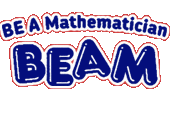Years 1 & 2: Geometry
This list consists of visual resources, activities and games designed to support the new curriculum programme of study in Years 1 and 2. Containing tips on using the resources and suggestions for further use it covers:
Year 1: recognise and name common 2D and 3D shapes and describe position, directions and movements, including half, quarter and three-quarter turns.
Year 2: identify and describe the properties of 2D shapes, including the number of sides and symmetry in a vertical line, identify and describe the properties of 3D shapes, including the number of edges, vertices and faces, identify 2-D shapes on surface of 3-D shapes and compare and sort common 2-D and 2-D shapes and everyday objects.
Order and arrange combinations of mathematical objects in patterns and use mathematical vocabulary to describe position, direction and movement.
Visit the primary mathematics webpage to access all lists.
YouTube: 3D Shapes Song
Listen to a song which shows examples of spheres, cylinders, cubes and cones. This could be used at the start of a lesson on 3D shapes before asking children to find examples of the shapes from a teacher selection and then within the classroom. Children could make up their own songs for learning about other 3D shapes.
Shape and Space
Outdoor learning always motivates children so the shape hunt idea is perfect for Year 1 learning to recognise shapes in the outdoor environment. A shape sorting activity helps assess the children's learning of shapes and their properties.
Making shapes with elastic bands is a great way of identifying and describing 2-D shapes and can be used as a paired activity with children challenging each other to create different shapes.
The first 6 minutes of this video show how children are guided into constructing 3D shapes from 2D diagrams using drinking straws and modelling dough. This is a great way of learning about the properties of 3D shapes, including faces, edges and vertices and also a great way of assessing this learning.In the plenary, children play a game where they listen to the properties of a shape being described including the shape of the faces. Though done with a Year 3 class this idea could be adapted for Year 2.
Shape Activities for Students Aged 5-7
The game What's that? allows children to practise matching names to shapes.
The worksheet Shapes practises shape recognition and colours by asking children to colour in different shapes in different colours within a pattern.
Squares and circles is a worksheet which could be used to support children in recognising and drawing squares and circles. It could be extended to drawing a person from triangles.
Let's Investigate Triangles
An NRICH investigation where children discover the different shapes of triangles for themselves using coloured rods or sticks. This could be run as a whole class investigation, in small groups with adult support or as part of an enrichment task depending on when taught and the overall readiness of the class. It requires coloured construction rods but contains a printable sheet showing the rods which may be used instead.
Starting Algebra / Shape and Space
Sometimes you may want a different way of practising an area of mathematics or even a worksheet, game or puzzle. This book provides 40 worksheets which may be used in KS1 to practise many areas of mathematics, or to support children in KS2.
Drawing shape characters is a fun way of recognising and naming 2-D shapes It can be found on sheet 33 page 76.
In Year 2 children are asked to describe position, direction and movement.
Practise giving and following directions on sheet 32, page 73 where children learn about moving along a straight line and turning through a right angle.
Play 'Twiddles' as a way of practising turns. The activity could be adapted to include half and three quarter turns and to include turning through right angles in a clockwise or anticlockwise direction. This activity is on Sheet 34, page 77 on pdf.



